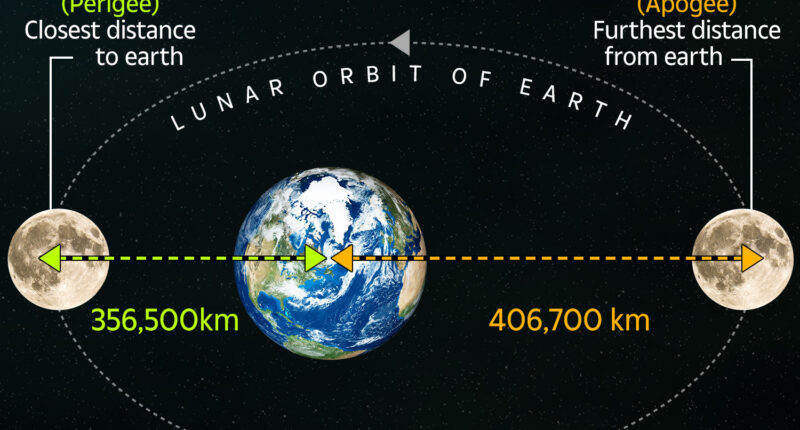LOCK your eyes on the skies in 2023: there are four supermoons to glimpse.
Better still, one of them is a Blue Moon – which is a special rarity for stargazers.
What is a supermoon?
A supermoon is a rare and impressive lunar event that you’ll only glimpse a few times a year.
When it happens, the sky is filled by a bright and large Moon that will wow anyone gazing up.
A supermoon is a combination of two different astronomical effects.
It’s when a new or full Moon coincides with a perigee – the Moon’s closest point to Earth in its monthly orbit.


A Moon has to come within 90% of its closest approach to Earth to be formally defined as a supermoon.
That means the Moon needs to come within 224,865 miles of Earth and be a full Moon to boot.
First, you need a full Moon, which is when the Moon is fully illuminated from Earth’s perspective.
For that to happen, Earth needs to be located between the Sun and the Moon.
Most read in Tech
That means we’re seeing the entire full face of the Moon lit up by the Sun.
Although the Earth is between the Sun and the Moon, it doesn’t create an eclipse because the Moon’s position relative to our home planet is slightly skewed.
And for a supermoon, you also need the Moon to be in the correct position in orbit around Earth.
The Moon has an elliptical orbit, and isn’t always the exact same distance from Earth.
Its closest point is called the perigee, and its farthest is the apogee.
With a full Moon at the perigee, you get a Super Moon.
And with a full Moon at the apogee, you get a Micro Moon.
2023 supermoon dates
Supermoons are relatively rare, occurring just three or four times in a single year.
That’s because you need a full Moon to occur alongside close-to-Earth orbital positioning.
There are four supermoons in 2023, on the following dates:
- July 3 – Buck Moon
- August 1 – Sturgeon Moon
- August 30 – Blue Moon
- September 29 – Harvest Moon
The August 30 supermoon also happens to be a Blue Moon.
A Blue Moon is a rare occurrence when you get a second full moon in a calendar month.
It has nothing to do with the colour of the moon, but is exciting nonetheless.
You usually only get a Blue Moon every two or three years – although you can get two in a year in rare cases (like 2018 and 2037).
So if you’re a skywatcher, August will be particularly interesting.


Keep your eyes peeled, as it’s rare to see two supermoons in a single month.
Best Phone and Gadget tips and hacks

Looking for tips and hacks for your phone? Want to find those secret features within social media apps? We have you covered…
We pay for your stories! Do you have a story for The Sun Online Tech & Science team? Email us at [email protected]
This post first appeared on Thesun.co.uk









